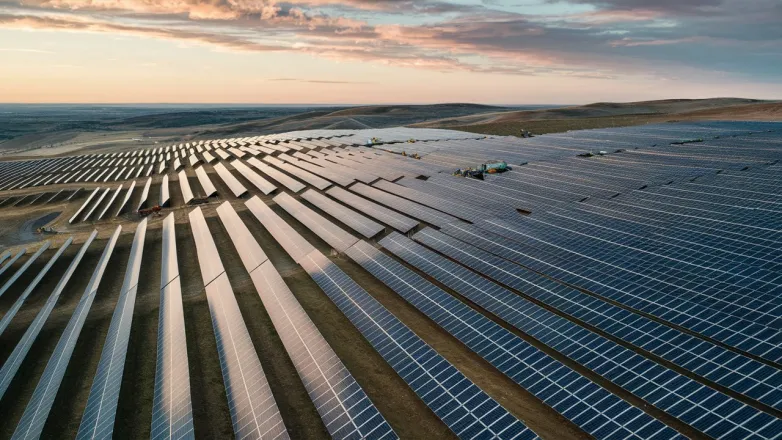EDP, QIC Strike Exclusive Queensland Solar-Storage Deal
- EDP Renewables and QIC fast-track a tender‑won 400‑MWac solar-plus-storage in Queensland, advancing PPA talks to deliver firmed clean power toward the state’s 2032/2035 renewables targets.

EDP Renewables signed an exclusivity agreement with Queensland Investment Corporation to deliver a 400‑MWac/480‑MWp solar project paired with battery storage in Queensland, won in a recent state tender. The partners are negotiating a power purchase agreement to anchor the large-scale solar‑BESS development; financial terms were not disclosed.
The project would expand EDPR’s Australian footprint and leverage QIC’s state-backed investment platform. Next steps include permitting, grid connection and contracting before financial close. The initiative aligns with Queensland’s legislated targets of 70% renewables by 2032 and 80% by 2035, aiming to boost grid reliability and add firmed renewable capacity in the state.
How will permitting, grid connection, and PPA shape EDPR-QIC’s Queensland project?
- Permitting will set the project’s critical path: planning approvals, environmental impact assessments, cultural heritage agreements, and land-use consents must align before EPC tendering and financial close can proceed.
- Environmental approvals will drive design tweaks—setbacks, wildlife corridors, glare management, and biodiversity offsets—which can alter layout, capacity factor, and construction sequencing.
- Community and First Nations engagement outcomes will shape benefit-sharing, construction hours, traffic routes, and workforce accommodation, influencing cost and schedule certainty.
- Compliance with state planning codes and federal environmental laws will determine whether staged approvals are possible, affecting how quickly early works (roads, fencing, geotech) can start.
- Grid connection to the transmission network operator will hinge on queue position and detailed power system studies (fault levels, system strength, voltage control), dictating inverter settings, reactive plant sizing, and BESS grid-forming capabilities.
- Connection studies will quantify marginal loss factors and curtailment risk; outcomes may push location-specific upgrades (e.g., dynamic reactive support, synchronous condensers) or capacity right-sizing to maximize net revenue.
- Negotiated performance standards under the National Electricity Rules will lock in technical obligations; failure to meet them could delay energization, so OEM selection and model validation must be front-loaded.
- A staged commissioning plan (solar first, then BESS, or vice versa) may be adopted to align with network outage windows and seasonal resource, smoothing cashflow ramp-up.
- If located within or near a Renewable Energy Zone, access to shared network upgrades could improve hosting capacity but will require coordination with other proponents and adherence to state-led timetables.
- The PPA will anchor bankability: tenor, offtaker credit quality, pricing structure (fixed, indexed, or hybrid), and firmness obligations will set debt sizing and sculpt equity returns.
- Shape and firming provisions will leverage the co-located BESS—time-shifting and cap products can reduce imbalance penalties and enhance capture price compared to standalone solar.
- Revenue allocation between energy, LGCs, and BESS services (arbitrage, FCAS, contingency services) will be defined in the PPA or left merchant; the split will affect revenue certainty and lender appetite.
- Curtailment, constraint, and MLF risk-sharing clauses will be pivotal; weaker protections would require higher contingency, while strong protections can support tighter EPC pricing.
- Construction start and financial close will likely be conditional on an agreed connection agreement and executed PPA; slippage in either will push COD and increase IDC.
- An indexed PPA or escalation mechanism can hedge construction inflation; absence of indexation may force a smaller debt tenor or higher equity check.
- BESS warranty and augmentation terms must align with PPA dispatch rights; mismatches could cap usable capacity and limit firming revenues late in life.
- Causer-pays and performance incentive structures in the PPA will encourage high availability and fast response from the BESS, driving controls and EMS investment decisions.
- Grid services commitments (voltage, inertia substitutes, system strength support) may win faster connection or curtailment relief, but will require additional capex in inverters and control systems.
- Coordinating outage windows with the network operator will define the build calendar; delays in transmission upgrades or protection setting approvals can outweigh on-site construction risks.
- Overall, swift, well-scoped permits, a de-risked connection agreement, and a bankable, flexible PPA will compress time to financial close, lower WACC, and determine the project’s final size, technology mix, and revenue stack.
Also read

